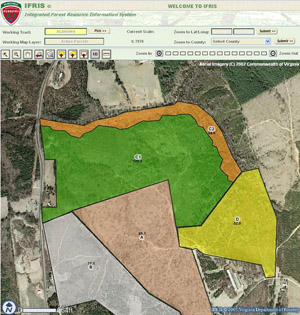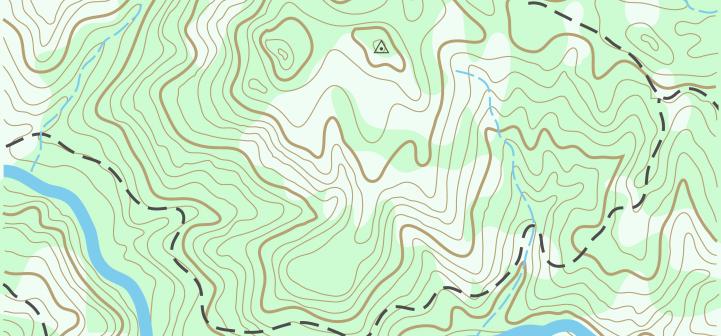By Mindia Brown, Virginia Department of Forestry
Local and state government entities are moving more of their products and applications to the Web to facilitate improved public access to information as well as to encourage more efficient data collection and analysis capabilities to support the day-to-day mandates of government entities. This article summarizes how the Virginia Department of Forestry is using ArcGIS server to support data collection from local foresters.
There are more than 15 million acres of forest land in Virginia that require sound management if long-term protection and sustainability of this resource is to be ensured. To this end, the Virginia Department of Forestry (VDOF) regularly provides private landowners with professional forest management advice and assistance in implementing practices, such as aerial spraying assistance, prescribed burning, and tree planting. It also assists landowners with cost-share and through seedling sales. Last year alone, VDOF assisted landowners by developing management plans that covered more than 147,000 forested acres and helped renew over 80,000 acres through tree planting.
Historically, however, the agency’s mechanism for tracking information about these many activities has been to input very simple data (e.g., planting – pine – 50 acres) into a tabular database. Sometimes a paper map was drawn and stored at the county office in a filing cabinet as an accompaniment to the activity, but these maps were not readily available to anyone outside that office. This method has obviously limited efficiency and usefulness in terms of preserving the rich geospatial history of forest management in Virginia.
Recognizing this deficiency, VDOF began developing a centralized, Web-based enterprise information system in 2004 that integrates GIS functionality to map a time-series of forest management activity and forest stand conditions. This Integrated Forest Resource Information System (IFRIS©) makes it possible for VDOF field staff to perform Web-based editing of geodatabases that store geometry of forest management activity areas and existing forest stand type/condition attribution. Users navigate to the property of focus, and using the 2002 VBMP photography as a guide, map (heads-up digitize) what forest management work is being, or is to be, performed. The information feeds the agency’s need to track employee accomplishments toward individual, strategic, and grants-matching goals.
Over time, the extent, occurrence and types of forest management activities will change. As users modify the mapped features, IFRIS© preserves geospatial history through automatic archival of “parent” features and their attributes. This will enable VDOF to re-create not only the forest management activity history, but also the change in forest types and conditions through time.

Feature editing tools for polygons include adding/deleting, splitting, merging, appending to, and cutting from features. There are also more advanced tools that include “exploding” a multipolygon feature into its component pieces, creating a “convex hull” to derive a polygon boundary from selected polygons, and buffering. Basic point and line-based editing was also developed. In addition to mapping areas that represent work performed, users have access to a library of annotation layers that they can add to, such as roads, streams, structures, and labels. And, to complement heads-up digitizing data entry, IFRIS© was built to allow data captured in the field using GPS to be uploaded into the IFRIS© geodatabases.
IFRIS© uses Microsoft SQL Server, and ESRI’s ArcSDE, ArcIMS, and ArcGIS Server to facilitate the creation, editing, validation, storage, and management of spatial data elements. VDOF contracted with Timmons Group (Richmond, VA) for the application development, infrastructure design and configuration. VDOF has chosen to host the system at the Virginia Information Technologies Agency (VITA) facilities, and has undergone a thorough security review as part of this arrangement.
At this writing, IFRIS© is on the verge of operational deployment of its first phase of development. VDOF expects that statewide mapping of forest management activities by its field foresters will result in a much richer dataset than the agency and its customers have ever had access. It will enable field staff to make better stewardship priority areas, economic impact zones, and others.
Future IFRIS© development will incorporate field-based mapping and data collection using personal data assistants (PDAs) with integrated GPS. This technology will make it easier for field staff to capture data describing the location and nature of wildfire incidents, water-quality harvest inspections, forest health observations, and other critical data. The timely, accurate and readily available database that will evolve via IFRIS© will help VDOF communicate the state of Virginia’s forests to all those who need or want to know.
Acknowledgements: Virginia Geospatial Newsletter (Winter 2006).
